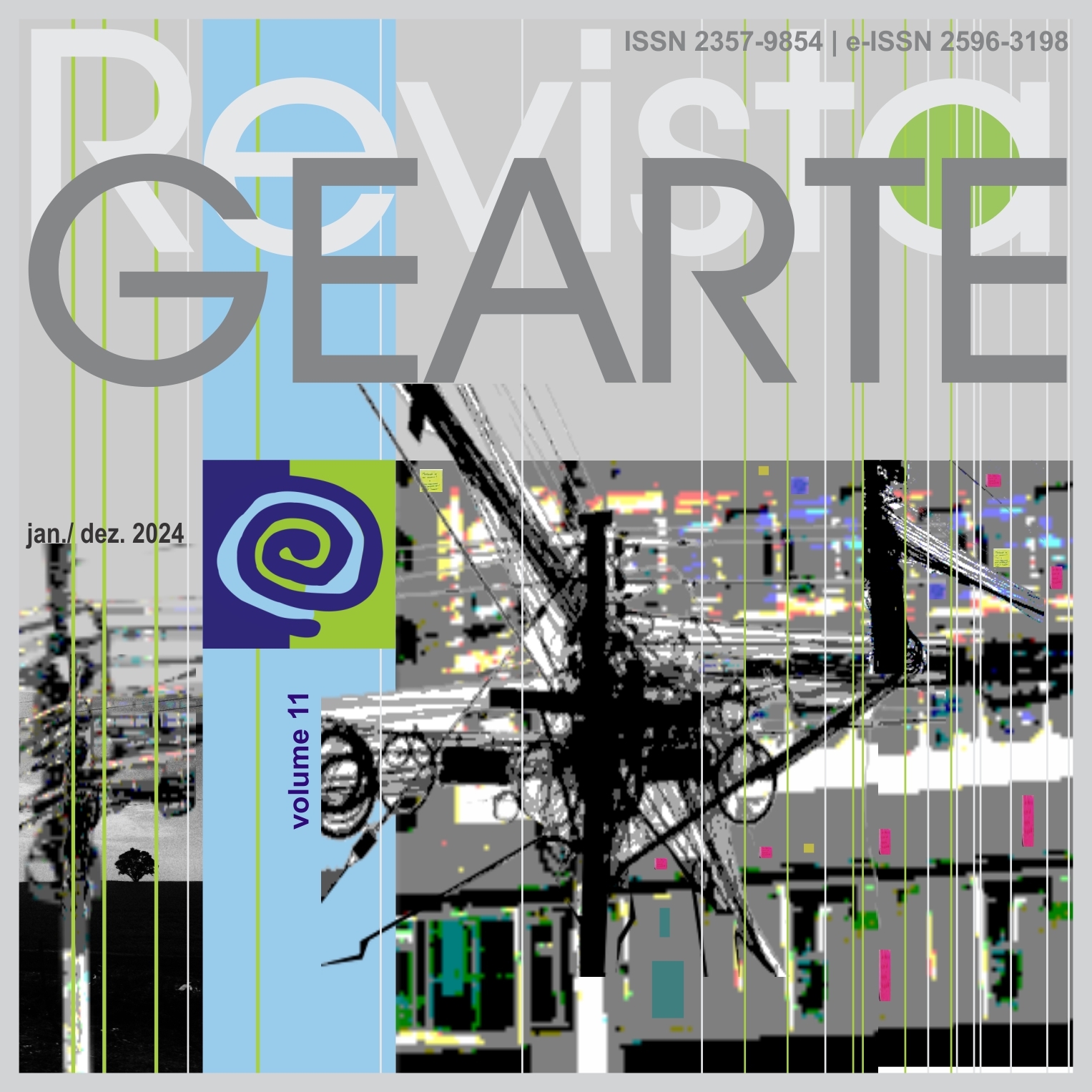Inteligencia artificial generativa para la educación de las artes: diálogo y análisis crítico sobre el concepto de experiencia creativa
DOI:
https://doi.org/10.22456/2357-9854.144345Palabras clave:
Educación artística, Inteligencia artificial generativa, Experiencia creativa, Simulacro, DiálogoResumen
El capítulo “¿Cuál es el vínculo entre el arte y la inteligencia artificial desde una práctica pedagógica crítica?” propuesto por Escaño y Osuna-Acedo (2024) proponía una reflexión poshumana sobre inteligencia artificial (IA), artes y educación crítica. El ejercicio dialógico presentado en este artículo continúa y profundiza en la reflexión analizando, entre el sujeto humano y la IA generativa, el concepto de experiencia creativa, un contexto epistemológico necesitado del componente crítico y compromiso ético y educativo.
Descargas
Citas
ARROYO-SAGASTA, Amaia. (Coord.). Inteligencia artificial y educación: construyendo puentes. Barcelona: Graó, 2024.
BAKER, Camile C.; SICCHIO, Kate. (Eds.). Intersecting Art and technology in practice: techne/technique/technology. Nueva York: Routledge, 2016.
BAUDRILLARD, Jean. Cultura y simulacro. Barcelona: Kairós, 2005.
BARTHES, Roland. El susurro del lenguaje. Más allá de la palabra y la escritura. Barcelona: Paidós, 1987.
CRESWELL, Jonh W. Research design: qualitative, quantitative, and mixed methods approaches. Londres: Sage Publications, 2014.
DELEUZE, Gilles; GUATTARI, Felix. ¿Qué es la filosofía? Barcelona: Anagrama, 2019.
DENZIN, Norman K. The research act: a theoretical introduction to sociological methods. Nueva York: Routledge, 2012.
ESCAÑO, Carlos; OSUNA-ACEDO, Sara. ¿Cuál es el vínculo entre el Arte y la Inteligencia Artificial desde una práctica pedagógica crítica? En A. Arroyo-Sagasta, A. (Coord.), Inteligencia artificial y educación: construyendo puentes. p. 83-98. Barcelona: Graó, 2024.
FAIRCLOUGH, Norman. Critical discourse analysis: the critical study of language. Londres y Nueva York: Longman, 2013.
FREIRE, Paulo. Pedagogía del oprimido. Madrid: Siglo XXI, 1999.
GADAMER, Hans-Georg. Truth and method. Londres y Nueva York: Continuum, 2004.
JAMESON, Fredric. Teoría de la postmodernidad. Madrid: Trotta, 1996.
KRIPPENDORFF, Klaus. Content analysis: an introduction to its methodology. Londres: Sage Publications, 2018.
MACHADO, Penousal; ROMERO, Juan; GREENFIELD, Gary. (Eds.). Artificial intelligence and the arts. Computational creativity, artistic behaviour, and tools for creatives. Berlín: Springer, 2021.
MARTÍN- PRADA, Juan. Teoría del arte y cultura digital. Madrid: Akal, 2023.
MARTÍN-PRADA, Juan. La creación artística visual frente a los retos de la inteligencia artificial. Automatización creativa y cuestionamientos éticos. Revista Eikon/imago, 13, 2024.
MERRIAM, Sharam B.; TISDELL, Elizabeth J. Qualitative research: a guide to design and implementation. Nueva York: Wiley, 2015.
NEUENDORF, Kimberly A. The content analysis guidebook. Londres: Sage Publications, 2017.
OPENAI. ChatGPT, 2024. https://chat.openai.com/chat
PALEY, Nina. Copyright is brain damage, 2015. https://www.youtube.com/watch?v=XO9FKQAxWZc&ab_channel=TEDxTalks. Acceso en: 15 de junio de 2024.
PASQUINELLI, Matteo. How a machine learns and fails. Spheres: journal for digital cultures, 5, 1–17, 2019.
PATTON, Michael Quinn. Qualitative research & evaluation methods. Londres: Sage Publications, 2015.
RICOEUR, Paul. Hermeneutics and the Human Sciences: essays on language, action and interpretation. Cambridge: Cambridge University Press, 2016.
SAWYER, R. Keith. Explaining creativity: the science of human innovation. Oxford: Oxford University Press, 2006.
STAKE, Robert E. The Art of Case Study Research. Londres: Sage Publications, 1995.
VAN DIJK, Teun A. Discourse and power. Londres: Palgrave Macmillan, 2008.
Descargas
Publicado
Cómo citar
Número
Sección
Licencia

Esta obra está bajo una licencia internacional Creative Commons Atribución 4.0.
Los lectores son libres para transferir, imprimir y utilizar los artículos publicados en la Revista, a condición de que haya siempre mención explícita al (a los) autor(es) y a la Revista GEARTE y que no haya cualquier alteración en el trabajo original. Cualquier otro uso de los textos tiene que ser aprobado por el(los) autor(es) y por la Revista. Al someter un artículo a la Revista GEARTE y tenerlo aprobado, los autores están de acuerdo en ceder, sin remuneración, los siguientes derechos a la Revista: los derechos de primera publicación y el permiso para que la Revista redistribuya ese artículo y sus metadatos a los servicios de indización y referencia que sus editores juzguen apropiados.
Este periódico utiliza una Licencia de Atribución Creative Commons 4.0 Internacional.






















